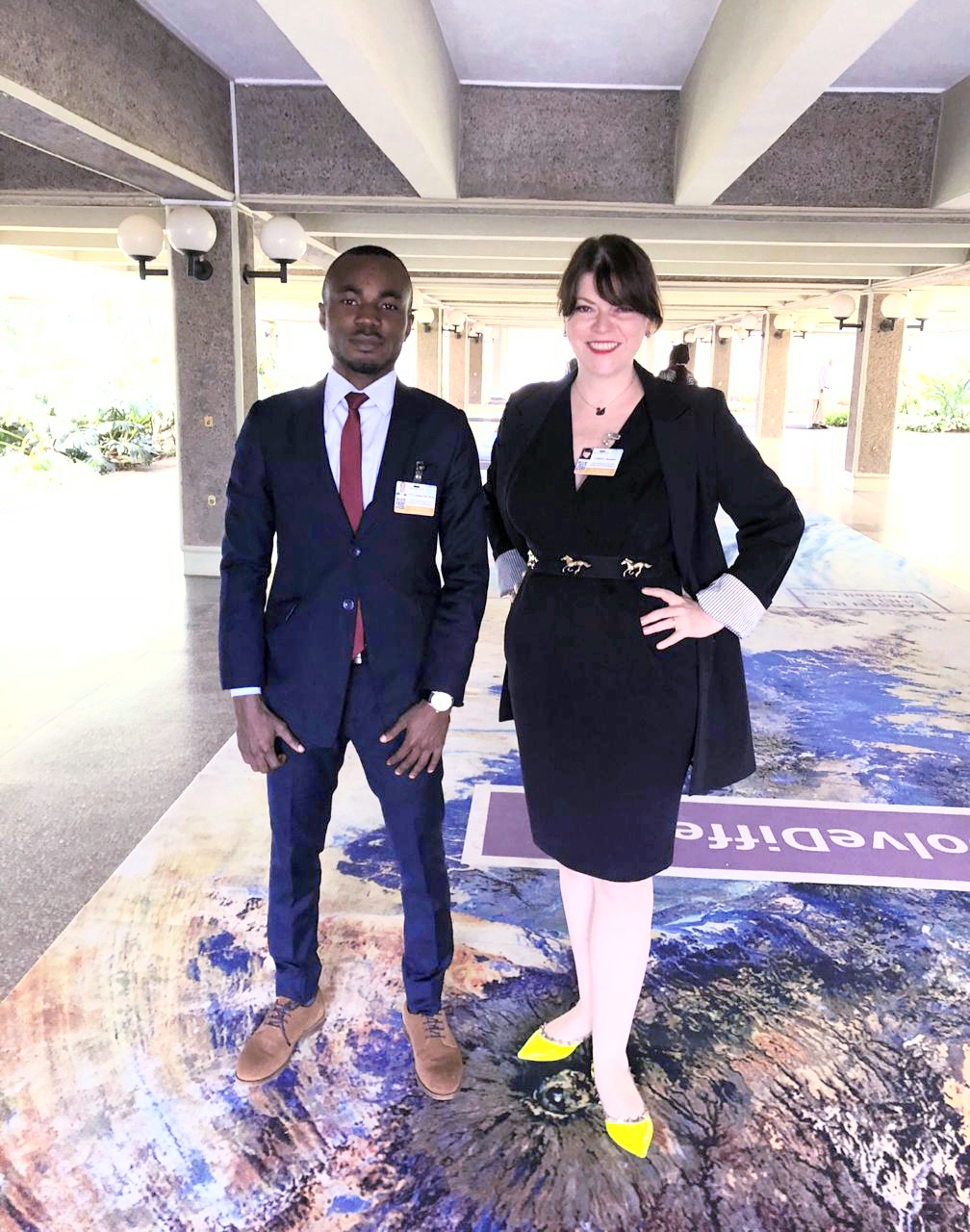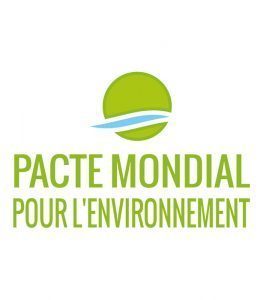[:en]
Notes on the Second Substantive Session Substantive Session of the Ad Hoc Open-ended Working Group established by UN General Assembly Resolution 72/277 – Nairobi, January 18-20 March, 2019
By Dr. Alessandra Lehmen, Ph.D., LL.M., Esq. (Brazil and New York)
A larger number of NGOs participated in the Second Session. There were daily coordination meetings, similarly to the First Session.
The Co-Chairs allowed NGOs to speak, after delegates. The NGO Group tried to coordinate a single daily statement of all entities that were present, but during the “informal dialogue” portion of the session, NGOs were allowed to speak individually.
The second substantive session basically dealt with options to address gaps, as set forth during the organizational session held in New York in September 2018 (see CIDCE’s input at https://www.unenvironment.org/events/conference/towards-global-pact-environment or https://drive.google.com/file/d/1LRUdv63elgnKWiDVBZFCjYIL5LTvX1xC/view?usp=sharing ).
For the third and final session, the New York, roadmap foresees the drafting of recommendations to the GA as to whether the UN shall convene an intergovernmental conference to discuss the Pact.
The main body of the meeting followed the format of reiteration of general positions, which repeated, to a large extent, those already stated by member states during the first session.
Again, some NGOs and delegations commented that the approach of considering the lengthy SG report could derail the process, as this drew the meeting into detailed sectoral considerations which led to many member states to express concern about the possibility of opening up existing conventions/treaties which have been carefully negotiated. They stressed that gaps may be intentional, to reflect hard-won compromises.
Some member states (e.g. the USA) stressed that there is no consensus on the notion of what constitutes a gap and therefore there can be no recommendation from the Working Group in this regard. Brazil reiterated the argument that the work at hand should be done by the International Law Commission, already tasked with compiling general principles of law. Brazil also stated that national sovereignty over natural resources should prevail.

Many countries insisted that the main gap in International Environmental Law is not necessarily normative, but has to do with implementation.
Russia voiced concerns over “green protectionism”, in the sense that unilateral sanctions disguised as environmental protection are unacceptable, and that it in necessary to counter attempts to politicize global environmental discussions.
There was a lot of emphasis on the point that UNEP shall remain the focal point of this process, that is, a new governance body should not be created.
The Small Insular Countries group voiced concerns over the risk of regression, in the sense that the process of discussion of a Pact shall not impact rights enshrined in other already existing documents.
In the “informal” dialogue portion of the session, the Co-Chairs invited considerations on 4 guiding questions:
- What options can be considered to address the possible gaps or challenges related to principles of IEL mentioned by delegations without duplicating nor undermining existing law and ongoing efforts/processes? What would be the objective of such options? What methodology should be used to develop them?
- What options can be considered to address possible gaps related to the governance structure of IEL, including challenges in coordination and mutual supportiveness as well as risks of incoherence highlighted by delegations?
- What options can be considered to address possible gaps or challenges relating to the implementation of existing rules and principles of IEL?
- What options can be considered to address possible gaps related to specific regulatory regimes or environment-related instruments with a view to strengthening the implementation of IEL?
Canada voiced concerns over the risk of “Schlimmbesserung”, in the sense that more instruments may muddy up an already intricate set of international environmental norms.
The EU stated it is important to identify emerging principles of International Environmental Law and to reach a commitment on those; the Montevideo Program could provide a useful roadmap.
The US retorted that reformulating environmental principles is an “impossible task”.
NGOs were given the floor at the end of the day. CIDCE delivered the following statement (available at https://wedocs.unep.org/handle/20.500.11822/27805):
“Madam Co-Chair, Mr. Co-Chair, good afternoon. I am Alessandra Lehmen, an environmental lawyer from Brazil, and, in this process, I represent CIDCE, the International Center of Comparative Environmental Law. We believe that the best option to address gaps in IEL is a global convention embedding the right to a healthy environment, and we are strongly committed to supporting the ongoing negotiation process towards a Global Pact for the Environment.
Beyond the semantic debate surrounding the notion of what constitutes a gap, and of whether gaps are found within or across existing regimes, governance structures, and implementation mechanisms, there lies a key concern of primary importance: the need to acknowledge that the most meaningful substantive gap in IEL which a Global Pact should address is the absence of an overarching legal framework that globally recognizes the human right to a healthy environment.

David Boyd and John Knox, respectively current and previous Special Rapporteurs on human rights and the environment, jointly stated as of last year: “Of paramount importance in this regard is the legal recognition of the right to a healthy environment at the global level, so that this fundamental human right can be enjoyed by all persons in all States, rather than in the subset of countries where it is currently recognized. The global recognition of this right would fill a glaring gap in the architecture of international human rights” (A/73/188, para 53).
We also wish to take this opportunity to remind that the initial proposal of a Global Pact was drawn up by a civil society group of prominent experts in IEL from around the globe. True to the origins of the Global Pact, environmental jurists from civil society remain firmly committed to the process triggered by Resolution 72/277, as it is an excellent opportunity not only to bridge gaps but also, and perhaps more importantly, to promote a range of improvements to strengthen IEL.
In this perspective, we believe that the focus of the Working Group’s future deliberations should be further sharpened to enable it to make clear recommendations to the General Assembly, during the first half this year, for “the convening of an intergovernmental conference to adopt an international instrument” (Resolution 72/277, para 2). Beyond the important discussion on gaps in IEL, the Working Group should decisively move towards considering the intended shape and content of the proposed Global Pact, already at this substantive session, with a view to dedicating most of the 3rd substantive session to an in-depth debate of the Pact itself. Thank you.”
Responding specifically to jurists’ statements, the US stated that principles are not enshrined in their legal system, and that difference is something that needed to be respected by the international community.
Micronesia, representing the Small Insular States, stated that the task of negotiating a Pact is not particularly difficult, and the draft submitted by France should be used as a starting point for the discussion of its terms.
Uruguay stressed the importance of participation of non-state actors in the process.
After the informal discussion, the floor was opened for the discussion of options. The UE stated that it has considered two alternatives: 1. A legally binding treaty, with basic safeguarding provisions and a list of principles, that could be combined with a non-binding instrument, to be completed by 2020; and/or 2. A high level declaration from the UN on effectiveness and implementation of international environmental law.
Argentina, speaking on behalf of GRULAC, stated that the process should focus on coordination and synergies on existing documents, without disregard to existing principles and avoiding duplication of efforts within the UN.
By the end of day 2, NGOs had a coordination meeting (pictured below) to define what would be the expected outcome of the process, namely a recommendation to the GA in the sense that the UN convenes and intergovernmental conference to discuss a binding Pact.

https://youtu.be/NzbTejRghpY[:fr]

Il est de coutume dans l’histoire de l’humanité, lorsque celle-ci fait face à des problématiques cruciales mettant en jeu la dignité, l’intégrité et les droits inhérents à la personne humaine, et pour lesquelles toutes les solutions semblent être inefficaces, de recourir à un pacte mondial comme ultime « joker ». En témoignent les contextes historiques ayant présidé à l’adoption des deux premiers pactes mondiaux, l’un sur les droits civils et politiques et l’autre sur les droits économiques sociaux et culturels, dont nul n’ignore la portée. Au regard de la situation alarmante de l’environnement mondial, avec pour corollaire les changements climatiques et l’inefficacité des efforts déployés et/ou le manque de volonté politique, certains décideurs estiment qu’il est temps de sortir le joker. Cet avis semble visiblement avoir du mal à faire l’unanimité, en témoignent les divergences qui ressortent de la seconde phase des négociations « vers un pacte mondial pour l’environnement ».
Du 18 au 20 mars 2019 s’est tenue au Siège de l’ONU Environnement (PNUE) à Nairobi (Kenya), la seconde session de fond du groupe de travail à composition non limitée (Groupe de Travail) chargé d’identifier et évaluer les possibles lacunes du droit international de l’environnement et autres instruments relatifs à l’environnement en vue de définir, s’il y a lieu, le champ d’application, les paramètres et les possibilités d’élaboration d’un instrument international. Institué par la Résolution 72/277 de l’Assemblée Générale des Nations Unies du 10 mai 2018 intitulée « Vers un pacte mondial pour l’environnement », le groupe de travail devra exécuter son mandat en 4 sessions : une session d’organisation qui a eu lieu en septembre 2018 au siège des Nations Unies à New-York ; et trois sessions de fond dont la première s’est tenue en Janvier 2019 à Nairobi (voir rapport du CIDCE sur la première session), la seconde faisant l’objet du présent rapport, et la troisième prévue pour les 20 au 22 mai à Nairobi.
Ayant été à l’initiative d’un projet de « pacte sur les droits de l’homme à l’environnement », le CIDCE promeut inlassablement ce processus et prend activement part au débat. Sous la prestigieuse plume du Professeur Michel PRIEUR, une communication a été adressée au Groupe de Travail dans le cadre des préparatifs de la seconde session de fond, visant à démontrer la « nécessité de mettre en place une convention mondiale consacrant le droit à l’environnement » (disponible ici version PDF). Aussi, lors de la première journée de la seconde session de fond à Nairobi, Le Dr. Alessandra LEHEMEN, membre de la délégation du CIDCE, est intervenue en vue de réitérer les positions du CIDCE sur les lacunes du droit international de l’environnement et l’intérêt d’un pacte mondial pour l’environnement. La vidéo de l’intervention ci-dessous (anglais).
Kablan Jean-Michel ATTA, Chargé de mission du CIDCE,
Doctorant à l’Université de Limoges
Mail: admin@cidce.org
https://youtu.be/NzbTejRghpY[:]
